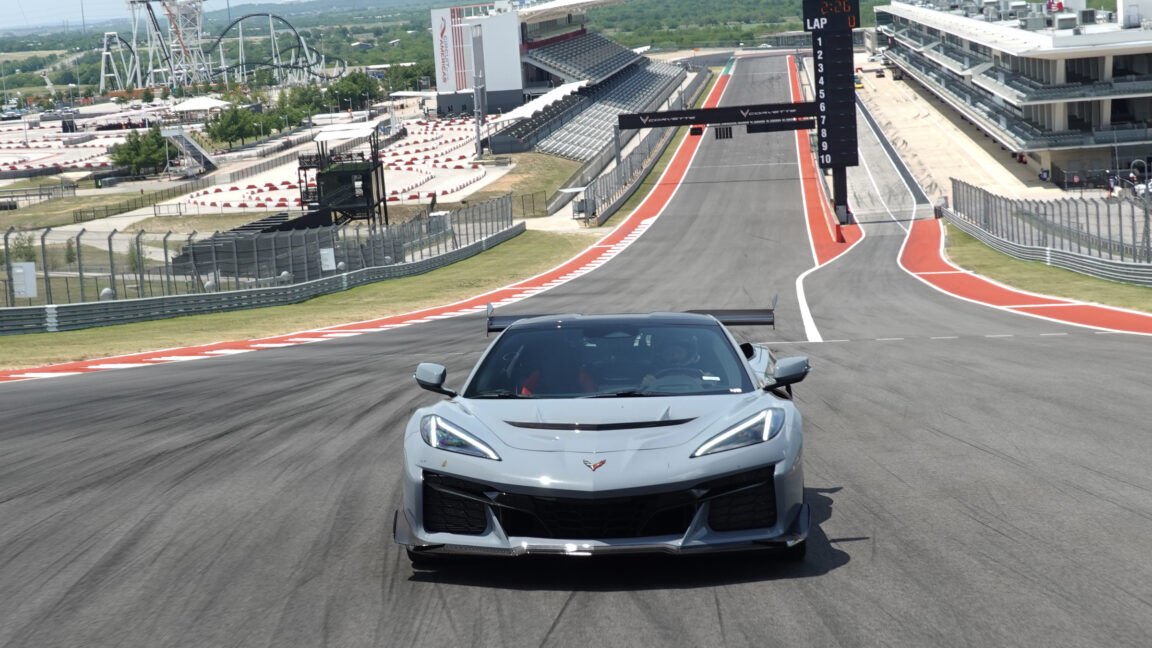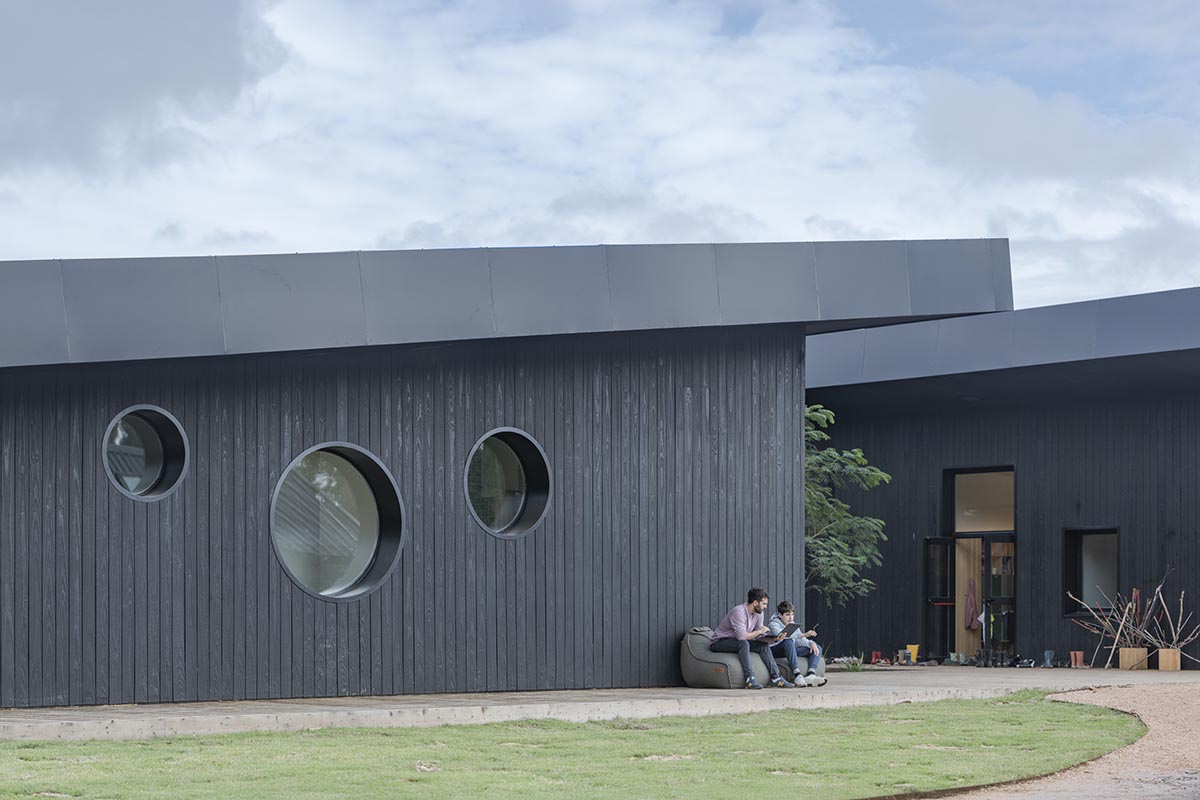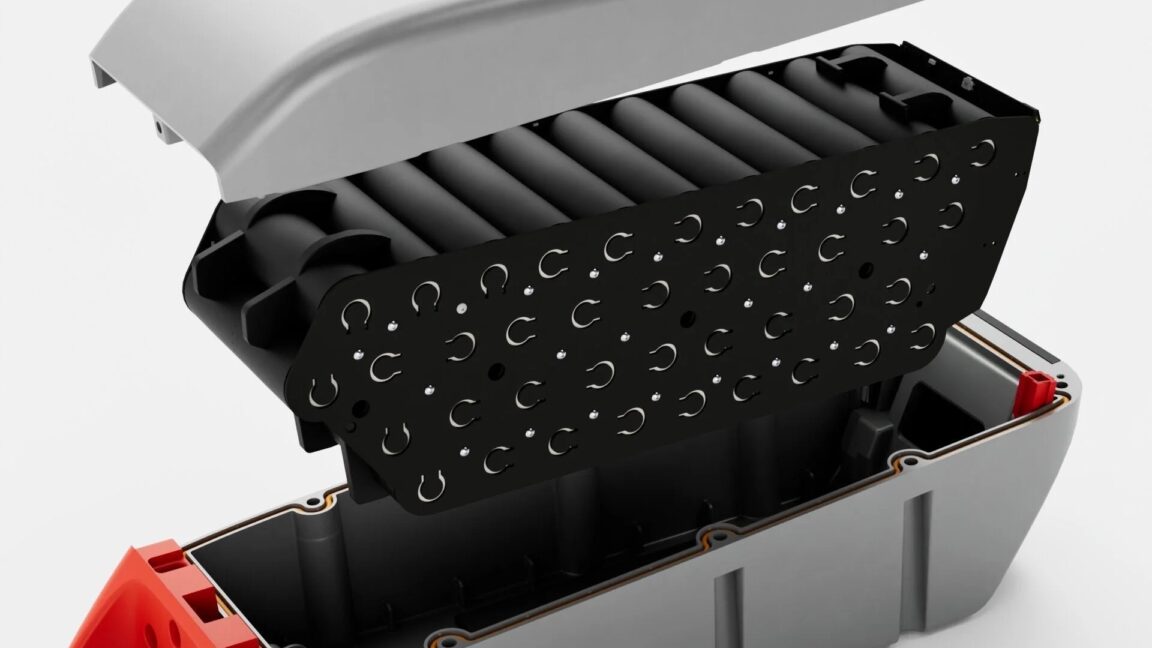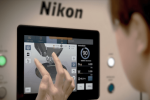2025 Chevrolet Corvette ZR1 first drive: Engineered for insane speed
the fastest one
2025 Chevrolet Corvette ZR1 first drive: Engineered for insane speed
Now that Chevrolet can fit turbos to the Corvette, it's gone and done just that.
Michael Teo Van Runkle
–
May 30, 2025 10:00 am
|
0
Chevrolet has given its latest Corvette variant a four-figure power output to go with a six-figure price tag.
Credit:
Michael Teo Van Runkle
Chevrolet has given its latest Corvette variant a four-figure power output to go with a six-figure price tag.
Credit:
Michael Teo Van Runkle
Story text
Size
Small
Standard
Large
Width
*
Standard
Wide
Links
Standard
Orange
* Subscribers only
Learn more
Chevrolet provided flights from Los Angeles to Austin and accommodation so Ars could drive the ZR1. Ars does not accept paid editorial content.
AUSTIN, Texas—By just my third lap in the top-spec 2025 Chevrolet Corvette ZR1, I glanced down at the speedometer toward the end of the Circuit of the Americas' long back straight and spied 181 mphdisplayed for a split second. Not bad for Chevy’s newest flagship sports car, especially given that the ZR1’s twin-turbocharged V8 pumps all 1,064 horsepower to the rear wheels only.
The US’s only purpose-built F1 track made for an excellent setting to taste Corvette’s latest; the ZR1 also commanded your attention while conquering the steep uphill toward the first corner, then winding through a series of challenging corners with plenty of elevation change. Luckily, the car itself is an engineering marvel, and Chevy brought along a team of engineers to explain exactly how the total package comes together to enable such a breathtaking pace, as well as how Chevy can responsibly sell such a powerful car to the general public at all.
The entire point of switching the Corvette’s eighth generation to a mid-engine layout was to improve weight distribution and allow the Corvette to compete against much more exotic competition from European OEMs like Ferrari. The front-engined car's engine bay also lacked the width to add a pair of turbos, due to the suspension and tire orientation, which dictated the use of a supercharger that kept peak power to “just” 755 hpin the last Corvette to wear the ZR1 badge.
It's a tight fit in there.
Credit:
Michael Teo Van Runkle
COTA reveals the ZR1's excellent balance, especially when specced with the optional aero package, carbon fiber wheels, and Michelin’s Cup 2 R tires. The tires—in effect, grooved slicks—allow for improved lateral acceleration but also the ability to consistently put the four-figure horsepower down to the asphalt. Yet Chevy’s engineers readily admitted the original target for ZR1 was just 850 hp, until 1,000 came into sight and required some serious creativity to reach reliably.
Biggest turbos ever
The ZR1’s engine, dubbed LT7, shares much with the 5.5 L naturally aspirated LT6 engine in the less-powerful, cheaper Z06. It’s still a flat-plane crank with dry-sump oiling, even if clever eyes inspecting an LT6 might have noticed that the dry-sump oil tank allowed for the placement of turbos all along.
The dual 74-millimeter turbos, the largest ever fitted to a production car, required new intake routing, and computer control of the wastegate actuation maintains an anti-lag boost of 6 to 7 psi even under a closed throttle. Turbo speed sensors allow the turbines to spin closer to maximum speed before the vanes physically break apart—a mechanical system typically needs to maintain a 7 percent margin of error, but the ZR1’s is more like 2–3 percent.
That's a massive turbocharger, and there are two of them.
Credit:
Michael Teo Van Runkle
The eventual power output actually wound up breaking two of Chevrolet’s dynos during early testing, we're told. So the C8’s eight-speed dual-clutch transmission also needed beefing up with physically wider gears that were shot-peened for additional strength, plus a revised lubrication system. The engine, meanwhile, creates enormous cooling demands when running at full throttle, which plays hand in hand with the downforce requirements of hitting such high speeds.
Consequently, the ZR1 sacrifices its usable frunk in favor of a massive radiator, while the hood’s heat extractor also releases trapped air and feeds it over the roofline. This freed up more space for additional cooling via the front fascia, which further benefits from canard spat dive planes. On the sides, an additional inlet on the side strakes complements the enormously wide scoops that debuted on the Z06. Coupes then get a split rear window—which harks back to Corvettes of old, while releasing hot air from the engine bay—plus new shoulder NACA intakes that directly feed the air box with cooler oxygen that even creates a ram air effect akin to mild supercharging.
Cooling for the ZR1 became an even higher priority, because the LT6 and LT7 employ extremely tight tolerances between the crankshaft and connecting rods, which mandates keeping the 5W-50 oil below 120° Cat all times. And the system simply works, as even on a hot and humid Texas day, I only noticed oil temperatures cresting above 104° Coccasionally.
The interior is better than any prior generation of Corvette, but it feels prosaic compared to the cockpits of its more exotic mid-engined rivals.
Michael Teo Van Runkle
The interior is better than any prior generation of Corvette, but it feels prosaic compared to the cockpits of its more exotic mid-engined rivals.
Michael Teo Van Runkle
Lightweight carbon-fiber wheels are mounted with the stickiest road-legal tires Chevy could fit.
Michael Teo Van Runkle
Lightweight carbon-fiber wheels are mounted with the stickiest road-legal tires Chevy could fit.
Michael Teo Van Runkle
The ZR1 gets added cooling and more wings.
Michael Teo Van Runkle
The ZR1 gets added cooling and more wings.
Michael Teo Van Runkle
Lightweight carbon-fiber wheels are mounted with the stickiest road-legal tires Chevy could fit.
Michael Teo Van Runkle
The ZR1 gets added cooling and more wings.
Michael Teo Van Runkle
The hardtop convertible ZR1 lacks the split-engine venting and shoulder intakes, while cutting into headroom so much that I skipped out while wearing a helmet. Other journalists noticed a drop-off in performance for the convertibles, and probably more so than the mild weight gains of just about 100 lbsmight suggest. Instead, temperatures probably came into play, as the ECU drew back timing and instead allowed mild overboost of 24–25 psi to compensate for the Texas day. Even so, an engineer admitted he thought the engine was probably down 5–10 percent on power.
The fact that I hit my highest-ever top speed despite the ZR1 potentially giving up somewhere between 53 to 106 hponly makes this Corvettes sound even more insane. But I essentially wound up driving the turbos, since the DCT’s gear ratios carry over from the Stingray and therefore drop out of peak power when shifting from second to third and third to fourth.
I suspect nothing short of an F1 racecar feels this fast on a circuit of this size. A track designed for corner exit speeds double my pace in the ZR1 helps explain why Chevrolet declined to set us loose on public roads behind the wheel.
We drove it on track—will owners cope with this much power on the street?
Credit:
Michael Teo Van Runkle
That’s a concern for potential buyers, though, and why the ZR1’s electronics undoubtedly ratchet back the insanity. Chevy still uses Bosch’s ninth-generation traction control, which debuted on C7 and operates on a 10-millisecond loop, even if the ABS runs at 5 milliseconds—while the ESC is at 20 milliseconds. I suspect this computerized nannying slowed me down a fair amount, in addition to the torque-by-gear restrictions in first and second that purposefully protect driveline components.
We’ve probably reached peak internal-combustion Corvette, which is something of a hint about the all-too-real question of where Chevy can go from here. If so, this car reaches a new level of unfathomable American ingenuity, combined with a newfound level of refinement and traction management that attempts to belie the undeniable absurdity to a minimal, arguably necessary, extent.
0 Comments
#chevrolet #corvette #zr1 #first #drive2025 Chevrolet Corvette ZR1 first drive: Engineered for insane speed
the fastest one
2025 Chevrolet Corvette ZR1 first drive: Engineered for insane speed
Now that Chevrolet can fit turbos to the Corvette, it's gone and done just that.
Michael Teo Van Runkle
–
May 30, 2025 10:00 am
|
0
Chevrolet has given its latest Corvette variant a four-figure power output to go with a six-figure price tag.
Credit:
Michael Teo Van Runkle
Chevrolet has given its latest Corvette variant a four-figure power output to go with a six-figure price tag.
Credit:
Michael Teo Van Runkle
Story text
Size
Small
Standard
Large
Width
*
Standard
Wide
Links
Standard
Orange
* Subscribers only
Learn more
Chevrolet provided flights from Los Angeles to Austin and accommodation so Ars could drive the ZR1. Ars does not accept paid editorial content.
AUSTIN, Texas—By just my third lap in the top-spec 2025 Chevrolet Corvette ZR1, I glanced down at the speedometer toward the end of the Circuit of the Americas' long back straight and spied 181 mphdisplayed for a split second. Not bad for Chevy’s newest flagship sports car, especially given that the ZR1’s twin-turbocharged V8 pumps all 1,064 horsepower to the rear wheels only.
The US’s only purpose-built F1 track made for an excellent setting to taste Corvette’s latest; the ZR1 also commanded your attention while conquering the steep uphill toward the first corner, then winding through a series of challenging corners with plenty of elevation change. Luckily, the car itself is an engineering marvel, and Chevy brought along a team of engineers to explain exactly how the total package comes together to enable such a breathtaking pace, as well as how Chevy can responsibly sell such a powerful car to the general public at all.
The entire point of switching the Corvette’s eighth generation to a mid-engine layout was to improve weight distribution and allow the Corvette to compete against much more exotic competition from European OEMs like Ferrari. The front-engined car's engine bay also lacked the width to add a pair of turbos, due to the suspension and tire orientation, which dictated the use of a supercharger that kept peak power to “just” 755 hpin the last Corvette to wear the ZR1 badge.
It's a tight fit in there.
Credit:
Michael Teo Van Runkle
COTA reveals the ZR1's excellent balance, especially when specced with the optional aero package, carbon fiber wheels, and Michelin’s Cup 2 R tires. The tires—in effect, grooved slicks—allow for improved lateral acceleration but also the ability to consistently put the four-figure horsepower down to the asphalt. Yet Chevy’s engineers readily admitted the original target for ZR1 was just 850 hp, until 1,000 came into sight and required some serious creativity to reach reliably.
Biggest turbos ever
The ZR1’s engine, dubbed LT7, shares much with the 5.5 L naturally aspirated LT6 engine in the less-powerful, cheaper Z06. It’s still a flat-plane crank with dry-sump oiling, even if clever eyes inspecting an LT6 might have noticed that the dry-sump oil tank allowed for the placement of turbos all along.
The dual 74-millimeter turbos, the largest ever fitted to a production car, required new intake routing, and computer control of the wastegate actuation maintains an anti-lag boost of 6 to 7 psi even under a closed throttle. Turbo speed sensors allow the turbines to spin closer to maximum speed before the vanes physically break apart—a mechanical system typically needs to maintain a 7 percent margin of error, but the ZR1’s is more like 2–3 percent.
That's a massive turbocharger, and there are two of them.
Credit:
Michael Teo Van Runkle
The eventual power output actually wound up breaking two of Chevrolet’s dynos during early testing, we're told. So the C8’s eight-speed dual-clutch transmission also needed beefing up with physically wider gears that were shot-peened for additional strength, plus a revised lubrication system. The engine, meanwhile, creates enormous cooling demands when running at full throttle, which plays hand in hand with the downforce requirements of hitting such high speeds.
Consequently, the ZR1 sacrifices its usable frunk in favor of a massive radiator, while the hood’s heat extractor also releases trapped air and feeds it over the roofline. This freed up more space for additional cooling via the front fascia, which further benefits from canard spat dive planes. On the sides, an additional inlet on the side strakes complements the enormously wide scoops that debuted on the Z06. Coupes then get a split rear window—which harks back to Corvettes of old, while releasing hot air from the engine bay—plus new shoulder NACA intakes that directly feed the air box with cooler oxygen that even creates a ram air effect akin to mild supercharging.
Cooling for the ZR1 became an even higher priority, because the LT6 and LT7 employ extremely tight tolerances between the crankshaft and connecting rods, which mandates keeping the 5W-50 oil below 120° Cat all times. And the system simply works, as even on a hot and humid Texas day, I only noticed oil temperatures cresting above 104° Coccasionally.
The interior is better than any prior generation of Corvette, but it feels prosaic compared to the cockpits of its more exotic mid-engined rivals.
Michael Teo Van Runkle
The interior is better than any prior generation of Corvette, but it feels prosaic compared to the cockpits of its more exotic mid-engined rivals.
Michael Teo Van Runkle
Lightweight carbon-fiber wheels are mounted with the stickiest road-legal tires Chevy could fit.
Michael Teo Van Runkle
Lightweight carbon-fiber wheels are mounted with the stickiest road-legal tires Chevy could fit.
Michael Teo Van Runkle
The ZR1 gets added cooling and more wings.
Michael Teo Van Runkle
The ZR1 gets added cooling and more wings.
Michael Teo Van Runkle
Lightweight carbon-fiber wheels are mounted with the stickiest road-legal tires Chevy could fit.
Michael Teo Van Runkle
The ZR1 gets added cooling and more wings.
Michael Teo Van Runkle
The hardtop convertible ZR1 lacks the split-engine venting and shoulder intakes, while cutting into headroom so much that I skipped out while wearing a helmet. Other journalists noticed a drop-off in performance for the convertibles, and probably more so than the mild weight gains of just about 100 lbsmight suggest. Instead, temperatures probably came into play, as the ECU drew back timing and instead allowed mild overboost of 24–25 psi to compensate for the Texas day. Even so, an engineer admitted he thought the engine was probably down 5–10 percent on power.
The fact that I hit my highest-ever top speed despite the ZR1 potentially giving up somewhere between 53 to 106 hponly makes this Corvettes sound even more insane. But I essentially wound up driving the turbos, since the DCT’s gear ratios carry over from the Stingray and therefore drop out of peak power when shifting from second to third and third to fourth.
I suspect nothing short of an F1 racecar feels this fast on a circuit of this size. A track designed for corner exit speeds double my pace in the ZR1 helps explain why Chevrolet declined to set us loose on public roads behind the wheel.
We drove it on track—will owners cope with this much power on the street?
Credit:
Michael Teo Van Runkle
That’s a concern for potential buyers, though, and why the ZR1’s electronics undoubtedly ratchet back the insanity. Chevy still uses Bosch’s ninth-generation traction control, which debuted on C7 and operates on a 10-millisecond loop, even if the ABS runs at 5 milliseconds—while the ESC is at 20 milliseconds. I suspect this computerized nannying slowed me down a fair amount, in addition to the torque-by-gear restrictions in first and second that purposefully protect driveline components.
We’ve probably reached peak internal-combustion Corvette, which is something of a hint about the all-too-real question of where Chevy can go from here. If so, this car reaches a new level of unfathomable American ingenuity, combined with a newfound level of refinement and traction management that attempts to belie the undeniable absurdity to a minimal, arguably necessary, extent.
0 Comments
#chevrolet #corvette #zr1 #first #drive















